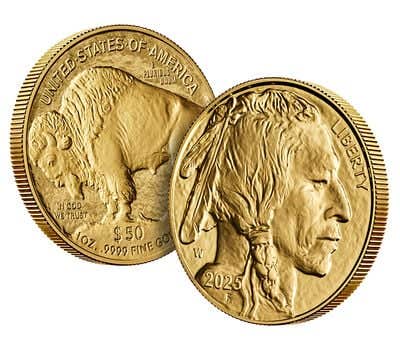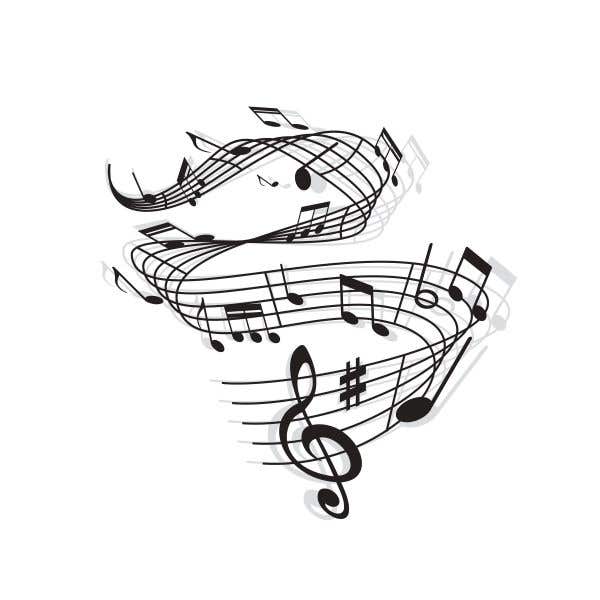Study real coins to detect fakes
The concern raised by Richard Francis Jr. about helping counterfeiters improve their product by revealing diagnostic imperfections found on fakes is an old one. I believe he has taken the wrong approach to the matter and offered well meaning but impractical solutions.
This article was originally printed in the latest issue of Numismatic News.
>> Subscribe today!
The concern raised by Richard Francis Jr. about helping counterfeiters improve their product by revealing diagnostic imperfections found on fakes is an old one. I believe he has taken the wrong approach to the matter and offered well meaning but impractical solutions.
As I read his “Viewpoint” recommendations, “Don’t Reveal Detection Secrets” in the Sept. 7 issue, I was transported back to the early 1970s where this matter/question was considered, addressed, and resolved. I cannot believe that decades later the same concern has arisen. Since I have witnessed both sides of this subject firsthand as a collector and than as a professional authenticator, please allow me to rehash the history of this dilemma and restate its solution for newcomers to our hobby.
Forty-plus years ago the average collector had little protection against counterfeits. A knowledgeable dealer was your best defense. The area I grew up in had one or two “go to” dealers when a coin was in question. Methods to detect fake coins consisted of weights, measurements, specific gravity tests, and word-of-mouth diagnostics, many of which I later discovered proved to be useless. The hobby had some noted authentication “experts,” but some sort of clearing house to authenticate coins was needed.
I can state for a fact that information regarding newly discovered counterfeits was a big concern to the “movers and shakers” in the ANA who sought to establish an authentication service for that organization. There were two sides lined up against each other. One group, including several founders of the ANA’s Certification Service, believed that no specific information about counterfeits should be divulged. That way, the counterfeiters could not learn from their mistakes. One pioneer authenticator in this group published an entertaining column featuring fake coins he was aware of, yet I cannot recall even one instance when he actually gave readers a single useful diagnostic to look for on counterfeits. Another in the group would not even allow ANA authenticators access to one of his major rarities to use as a comparison piece when he owned several examples. He was afraid that the diagnostics for the genuine specimens would somehow get back to the counterfeiters. The other group of numismatists, a minority, believed that all the diagnostics we found on each new counterfeit should be shared universally. This would help protect “informed” dealers and collectors from purchasing fakes. They understood that if this approach were taken, it would be unavoidable to keep information from the fakers and they could improve their products at a much faster pace. At any rate, the International Association of Professional Numismatists (IAPN) was publishing counterfeit bulletins on specific fake coins on a regular basis for their members and no one seemed to object.
By 1973, the dissemination of information about new fakes seen in the United States fell into our hands at the ANA’s Certification Service. At first, the director, Charles Hoskins, walked a thin line between the opposing factions. Then, to keep everyone happy, we started to share tidbits of diagnostic information with submitters; just enough to identify a fake and convince them that we knew what we were doing. At the same time, we kept internal records of the diagnostics found on the counterfeits – most of which we didn’t publish. Behind the scenes, Hoskins shared all the diagnostics of new fakes with the personnel at the Bureau of the Mint Laboratory. Eventually, we started to publish diagnostics for fakes in the Numismatist magazine for all to see. I know for a fact that even today, the columns written in the numismatic press by authenticators from various third-party grading services are some of the most popular items in that media.
During my first year as a professional authenticator (1972), an astounding thing happened. Rather than concentrate on the diagnostics of counterfeits, I realized that it was more important for me to know what a genuine specimen should look like! I could record all the details found on specific fake coins but they would become obsolete with each new generation of counterfeits. Evidence for this became quickly apparent. There was a guide to detecting counterfeit gold coins by Alfred Dieffenbacher in our library. I believe it was published in Europe around 1964 as a counterfeit detector for major banks. It had photo diagnostics of dozens of fake gold coins. Many coins submitted to us for authentication were in that book; yet within a few months, we never used it again.
Our detection skills surpassed the book and the coins it showed were rather crude when compared to the new counterfeits entering circulation. The simple fact was, practice makes perfect. As new technologies were developed over the years, the counterfeits improved with or without help.
That’s where we stand today. In the ensuing years, authenticators have amassed files on genuine coins. By studying high grade examples for diagnostic markers, even low grade specimens can be identified. There have been some amusing bumps along the way. In one case involving the 1955 Doubled Die Lincoln cent, after recording all the markers found on several different die states of genuine coins, there was one that I did not divulge to anyone, not the Mint Lab, not even my associates. Imagine my surprise years later when “my personal diagnostic,” the die polish from the “T” of “Cent,” was pictured in the Numismatist magazine by other authenticators. There are no secret diagnostics. Anyone with a group of similar coins and a microscope can find them all. That’s how the diagnostics for the 1942/1 Mercury dime were plotted. At the certification service in Washington, D.C., we received a half roll of gem BU coins. My first thought was that these rare coins in this condition could not possibly be authentic. They were genuine. That’s where I first recorded the diagonal die polish at the base of the faces on the reverse that we use to authenticate this variety today. There are several other markers on those coins that have never been shared with anyone. It is a good bet that someone has even found my “exclusive” diagnostic marker on this variety. I have been waiting 37 years to see it published one day in some column.
That’s enough background. I’m not going to discuss any of the flaws associated with the censorship or bureaucratic solutions concerning the release of information proposed by Mr. Francis to solve what I believe to be a non-existing problem. Instead, I’ll explain why I believe it to be in our best interest to continue to reveal some of the diagnostics on counterfeit coins.
First and foremost, it is not easy to make a deceptive counterfeit coin. These days it takes a “big” operation. I’ll be the first to say that even with Col. Sanders “secret” recipe for fried chicken, I couldn’t come close to producing a good product. So it was 45 years ago. The Beirut counterfeiters had the coining presses and dies but they were ignorant of the press tonnage to use and annealing process for the dies. The coins they were striking were so crude that authentication “experts” at the time thought the Beirut fakes that flooded the U.S. market were “cast” copies.
Hoskins and I would often joke that we could go over there and teach them how to make really excellent fakes that would defy detection by “so-called” authentication experts and major dealers. How? Because we knew what the genuine coin should look like at the “microscopic” level.
While I’m on the subject of microscopes and magnification, let me make another point here. In 1985, I told a seminar student that the days of using a hand lens for authentication were over. Counterfeits were getting too deceptive. I had a 13-year head start on him and the fakers as far as studying coins under high magnification. Nevertheless, I told him that if he would start viewing genuine coins using the electron microscope at his office, in a few months he would surpass me and virtually everyone in the world with regard to the surface characteristics of genuine coins. All this, our “playbook” to detect fake coins has always been available to the counterfeiters too! So while it’s true that many fakes can defy detection, they are not perfected.
Next, it is virtually impossible to keep information out of the hands of counterfeiters. One year in a counterfeit detection class at the ANA Summer Seminar, I revealed a single diagnostic “marker” found on a recently discovered deceptive $10 Indian to a class of about 20 students. Within a month, the exact same die-struck counterfeits appeared at the authentication service with only that one particular defect removed from the counterfeit dies. That’s one reason we never published all the characteristic diagnostics found on each fake. What we have done by revealing even specific diagnostics is to help the counterfeiters eliminate entire types of defects from their work. For example, the “wormy tool marks” I first discovered and named on the “Omega” High Relief coins were never seen again on the “newer” counterfeits made in the 1980s. Sooner or later, without our help, they would have disappeared from counterfeits anyway as their die making methods improved.
Finally, I’ll repeat my response to this “Viewpoint” argument in its simplest terms. Any counterfeiter has access to genuine coins. The closer he is able to duplicate the “look” of a genuine specimen, the more deceptive his fake will be. It becomes a simple matter to critique their own work, correct any defects, and strive to make better fakes without reading about “diagnostic markers” in the numismatic press. That’s where dealers and collectors have been alerted to fakes in the past and they still deserve this protection. The system works for those who care to be informed. The major third-party grading services have been a boon to the collecting public with respect to counterfeits. I for one wish the diagnostics for every fake they identify were made public on the Internet. It would make my job as an authenticator easier.
This Viewpoint was written by F. Michael Fazzari, a professional coin authenticator and columnist for Numismatic News. Opinions expressed in “Viewpoint” are not necessarily those of Numismatic News. To have your opinion considered for Viewpoint, write to David C. Harper, Editor, Numismatic News, 700 E. State St., Iola, WI 54990. Send e-mail to david.harper@fwmedia.com.
More Coin Collecting Resources:
• Subscribe to our Coin Price Guide, buy Coin Books & Coin Folders and join the NumisMaster VIP Program









